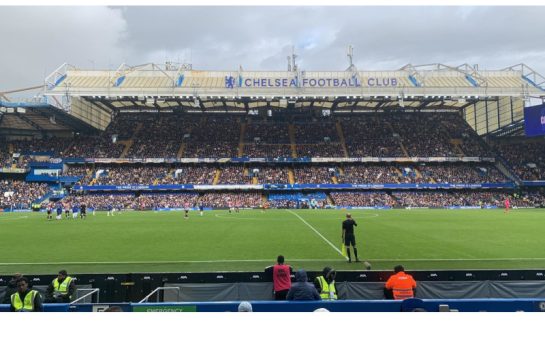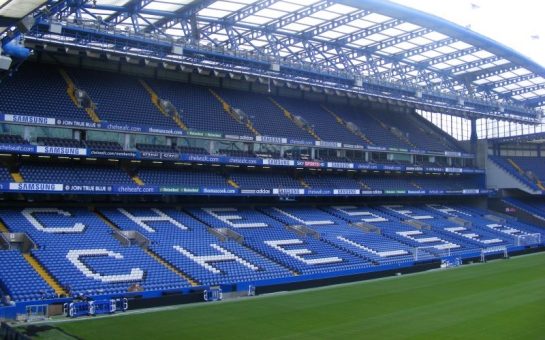Average match attendance at Women’s Super League (WSL) games has nearly trebled from last season, as women’s football continues to make whirlwind progress.
The average WSL attendance in the 2021/22 season was 1,944, up this season to 5,444.
In 2021, the FA launched its strategy to increase average WSL attendance to 6,000 by 2024.
The three-year WSL attendance strategy is currently one year ahead of schedule, propelled by England’s 2022 Euros win on home soil and playing big games in the clubs’ main stadiums.
Flo Lloyd-Hughes, the host of leading women’s football podcast Counter Pressed, said: “It’s been exciting to see the growth in women’s football attendances and coverage over the last few years – the only way is up now.
“We have been here before when it comes to attendance, with big spikes around major moments, but it does feel different this time.”
The biggest attendance jumps have been from Manchester United, up from just less than 3,000 to nearly 12,000 and Arsenal, up from 2,882 to more than 10,500.
Leicester saw the smallest increase, from 1,807 to 2,647 but every single club saw their attendance increase.
More WSL games at men’s stadiums
Arsenal broke the WSL attendance record when they played Tottenham in a North London derby at the Emirates back in September, with over 53,000 tickets sold.
The Gunners painted North London red in a 4-0 win in front of the record-breaking 47,367 fans who showed up.
Manchester United also visited the Emirates in November with a crowd of 40,604 spectators – filling two thirds of its capacity – while Arsenal’s WSL battle against rivals Chelsea brought in over 46,881 supporters in January.
A new WSL record attendance crowd for Arsenal Women at the Emirates Stadium. 👏 pic.twitter.com/cdzGR6WbDH
— DAZN Football (@DAZNFootball) September 24, 2022
Arsenal Women’s usual ground, Meadow Park, can only welcome 4,500 spectators.
To host the swarm of new supporters sporting shirts with Williamson and Mead on the back, the three-time WSL winners will play five league games at the Emirates next season – up from three league matches this season.
Leicester City Women have played the majority of their home fixtures at the club’s main King Power stadium following their promotion into the top flight.
They have failed to fill the stands, but the move symbolises the club’s commitment to driving the women’s team forward.
Playing WSL games at the clubs’ main stadiums demonstrates the demand for women’s football and inspires important action to reduce the imbalance in funding, conditions and prize money compared with the Premier League.
The visibility and media attention from playing big games at big stadiums has the potential to benefit the entire league by trickling into the lower leagues and grassroots, and resulting in sustainable growth for women’s football.
WSL’s impact on grassroots and lower-tier football
Lloyd-Hughes added: “There has been a significant step forward which should be celebrated, but things need to be pushed on even further to make women’s football sustainable in England and also feed this growth down to the grassroots.”
For Nicola Gibson, a Watford defender with years of Championship and National League experience from her time at London Bees and Crawley Wasps, the trickle-down effect from top-flight coverage has already increased interest in lower-league games.
Watford won the Women’s National League play-offs and celebrated their promotion to the Championship in front of thousands in the stands, as well as a global audience from a live BBC stream.
Gibson said: “We’ve already started to see that trickle-down effect in attendance and long may it continue.
“A couple of years ago, you wouldn’t believe there would be that level of interest for the Tier 3 play-offs but it shows where we are right now with it all.
“Because the women’s game has had such rapid growth in the last five or so years, it will look completely different again in five more years.
“Hats off to clubs like Arsenal who have had games sold out at the Emirates this year, which no one might have believed was possible a few years ago. They’re throwing the whole marketing budget and the kitchen sink at it and they’re getting the rewards.”
We couldn’t have done it without you. 💛 pic.twitter.com/g6acmqTcx8
— Watford FC Women (@WatfordFCWomen) May 20, 2023
Ellie Guedalla, a voluntary coach at East London grassroots club Clapton Community FC, played football when she was younger but stopped due to the lack of access.
She thinks the rise in coverage of women’s football will help nurture a future crop of talented players who have more opportunity and support.
She said: “Women are being celebrated for being strong, fast and clever, as opposed to skinny and pretty. The growth in women’s football is brilliant because girls are going to get the support to be the best they can be.
“I hope women’s football continues to grow and that it doesn’t mimic the men’s game. There’s so much history of corruption and poor practice – if we just mimic the men’s model, it’ll be backwards.
“Women need to do it our way.”
WSL live coverage: a record year for women’s sport
Last year saw record viewing figures for domestic women’s sport in the UK, with 37.6m watching in 2022 compared to the previous high of 32.9m in 2021, according to data from the Women’s Sport Trust.
The WSL coverage on BBC and Sky Sports was a large force behind the rise in viewing time for women’s sport.
By the end of April, with one month left of the 2022/23 WSL campaign still to go, 15.3m UK viewers had watched at least three minutes of WSL live action on TV.
This topped the 14.6m viewers recorded throughout the whole of the 2021/22 season.
The Women’s Sport Trust also recorded that average minutes viewed of the 2022/23 season was 37 minutes, up by one minute compared to last season’s 36 average minutes.
The Women’s Sport Trust also recorded that average match audiences are up 36% season-on-season.
Despite the increased coverage, finding pubs showing the women’s games is not easy. This is where Baller Friends Collective (Baller FC) come in.
Baller FC is a group of friends who have witnessed footie fans come together for the highs and lows of women’s football at their inclusive viewing parties.
The collective filled Hoxton’s The Stag’s Head to the rafters with fans cheering on their teams throughout last summer’s landmark Euros tournament.
For co-founder Jo de Freyssenet, seeing these crowds show up for women’s football is particularly special as she didn’t get to experience it as a footie-mad child.
She said: “When I was looking for women’s football in the early 90s, it was like it didn’t exist – it wasn’t on TV at all. I couldn’t see any England players to aspire to.
“For it to have gone on the journey it has and to see the crowds the games are pulling in now is down to a lot of hard work from one generation to the next to pave the way.
“Women’s football is getting close to where it should be.”





